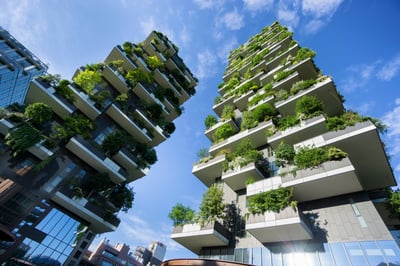August 28, 2019
 by Nicholas Van Antwerp / August 28, 2019
by Nicholas Van Antwerp / August 28, 2019

What is “architecture?” Four walls and a roof? A shiny tower?
When most people think architecture, they think of where they live or the new iconic skyscraper going up in the nearest city. Or maybe they think of what some of the famous architects like Frank Lloyd Wright or Le Corbusier have designed.
To truly answer the question of what architecture is, we still refer to a definition that was written over 2000 years ago in the first century BC by Roman architect Marcus Vitruvius. It remains the most clear and concise definition.
In his 10 books, Marcus Vitruvius defined characteristics that architecture must possess. These characteristics are Firmitas, Utilitas, and Venustas, or "Is it structural?" "Is it functional?" and "Is it beautiful?" Asking ourselves these questions still allows us to define what architecture is today.
In this article we will examine each of these principles and the types of architecture they encourage, as well as what it means to be an architect.
As defined by Roman architect Marcus Vitruvius, architecture is a building or object that is structurally sound, functional, and beautiful – or firmitas, utilitas, and venustas.
It’s hard to say what Marcus Vitruvius would think of the modern works of architecture that are being produced and exported like any other commodity in today’s complex global market. Would he approve of the Burj Khalifa erected in Dubai? It is beautiful, it serves a purpose, and it is a feat of structural engineering.
So, by his own philosophy, the Burj Khalifa – like every bus station, suburban development, park, and even furniture item – can be called architecture. Beyond the skyscrapers of modern cities, architecture can be the design of residential homes, suburban strip malls, art, parks, and more.
Let’s take a deep dive into the different aspects of architecture as Vitruvius described them.
The most elemental of Vitruvius’ principles is that architecture needs to be structurally solid, whether it’s a store, college dormitory, music amphitheater, or gas station. To be considered architecture, they must be robust enough to cater to an event or allow for the execution of a certain activity, as well as provide shelter from the elements.
The Colosseum in Rome has stood since before Vitruvius’ time and is an excellent example of Firmitas. It has withstood the test of time, has provided a venue for events, and is beautifully detailed.
If architecture is more than buildings, where does the definition stop?
Wherever you’re reading this article, whether it’s your apartment, house, office, local coffee shop, airport terminal, or train station, all of these structures are architecture. As magnificent or mundane as they may appear, each was designed and created to meet the end user’s functional need. The listed structures are pretty easy to call architecture as they are all buildings of some sort featuring walls, a roof, and maybe a door.
Let’s look at something more abstract, like Central Park. Is it architecture?
In this seemingly natural environment, every trail, tree, rock, and pond in Central Park is intentional. Created by Frederick Law Olmsted in 1858, this park was designed to give users the feeling of being immersed in nature. This designed and managed beauty is no less evident in Central Park than in a skyscraper around the perimeter of the park. The park meets Vitruvius’ criteria for functionality and can safely be considered a work of architecture.
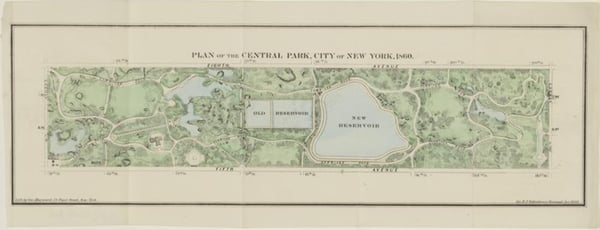
Image courtesy of Museum of the City of New York.
The beauty of architecture, like in any other medium, is subjective.
As someone who has presented projects to cities and juries of my peers, believing them to be the perfect solution, I have also left meetings shocked that the audience did not see the idea in the same light. To critique a building and say whether it is or is not beautiful is difficult as everyone has their preconceived notion of beauty. Venustas can be found in small Portuguese seaside fishing villages and in a modern apartment building that gleams like a gemstone in the sunlight.
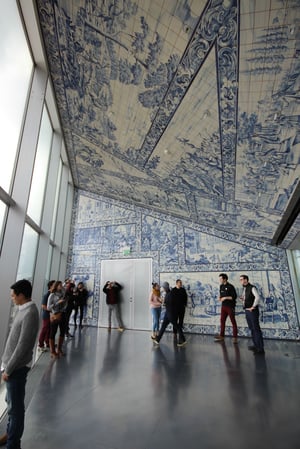
There are architects who take buildings, windows, walls, and doors beyond the subjectivity of beauty and create an architecture that is art. Rem Koolhaas' Casa Da Musica is an object in a field, playing with positive and negative space in its slanting, angular facades.
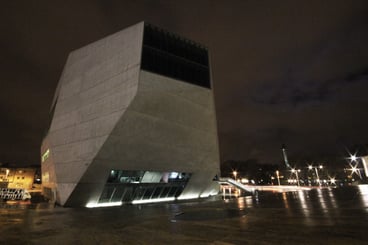
Photo credit: Nick Van Antwerp
The same is true of Frank Gehry’s Guggenheim museum in Bilbao, Spain. Its sculptural form glitters in the old port city next to the river.
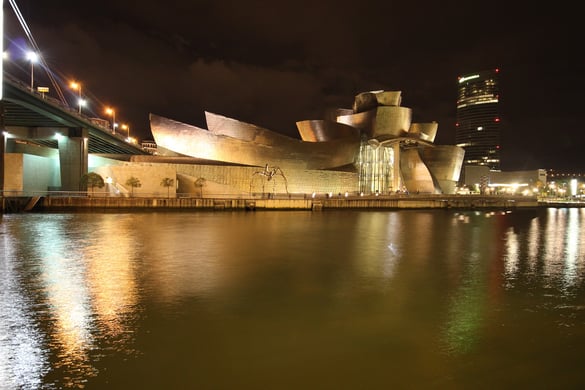
Photo credit: Nick Van Antwerp
These two buildings are just a few of the magnificent works of architecture that exemplify Vitruvius’ idea of Venustas.
So, what does an architect do? Do they spend every day building beautiful, unique feats of architecture? No, not by any means.
The day-to-day of architects can include meeting with clients, measuring spaces, and producing drawings for contractors or cities.
There are a wide range of job functions architects do, but as Bjarke Ingels said:
“When architecture is at its best you’re coming up with pure fiction. Then after all the hard work, permits, budgeting, and all the construction, it becomes concrete reality.”
These daily activities are just the purist’s idea of architecture.
The professionals you traditionally think of as architects are classically trained individuals who solve issues of scale, proportion, and spatial relations. These structural needs of buildings have, at their core, changed little since Vitruvius was publishing his theories.
Today architects work on designing modern office spaces for the next generation of workers, retirement facilities for an ageing population living longer than any previous generation, and building feats of technology that house thousands – that’s more than 10 times the population of the entire Roman Empire during Vitruvius’ time.
There are other, less traditional, kinds of architects. 2000 years ago, the idea of smartphones driven by algorithms was just as improbable as people being able to fly the way Icarus did. However, today, there are individuals called software architects who specialize in creating code to provide the interfaces we use in our daily lives.
|
Related: Want to learn how software architects utilize technology to help create new-age architecture? Learn about computer-aided design (CAD) software, how it works, and its uses. |
These new “architects” do adhere to Vitruvius’ principles all the same. They create codes that are structurally sound, and then, when broken down and organized, appear beautiful. It’s not a stretch to call these designers and creators architects.
Curious about the more famous architects? Let’s look at the select few that have separated themselves in the industry and ascended into the realm of Starchitects.
If I asked you to imagine an architect, you’d probably imagine the architects from the early to mid-1900s, like Frank Lloyd Wright, Mies van der Rohe, and Philip Johnson. In your head, all of them are probably wearing black and looking at sketches behind thick glasses. These architects all contributed in shaping modern building, including concepts like the open plan, connections to the outdoors, and high-rise construction.
The newest generation of famous architects, or Starchitects, include names like: Rem Koolhaas, Sir Norman Foster, and Jeanne Gang. They have taken these concepts and ideas and pushed them to define architects’ role in the 21st Century and how they can – and should – create a more enjoyable world to live in.
Famed architect Philip Johnson, who is notable for his design of a glass house, famously said all architects want to live beyond their own death. That is what Hadid has accomplished after her early passing in 2016.
Her New York-based firm has carried on her legacy of creating sculptural buildings all like the recently completed apartments at 520 West 28th in New York. The building is notable for being next to the High Line, the famous walking path set atop an abandoned railroad track, where the building appears like a sculpture in a museum.
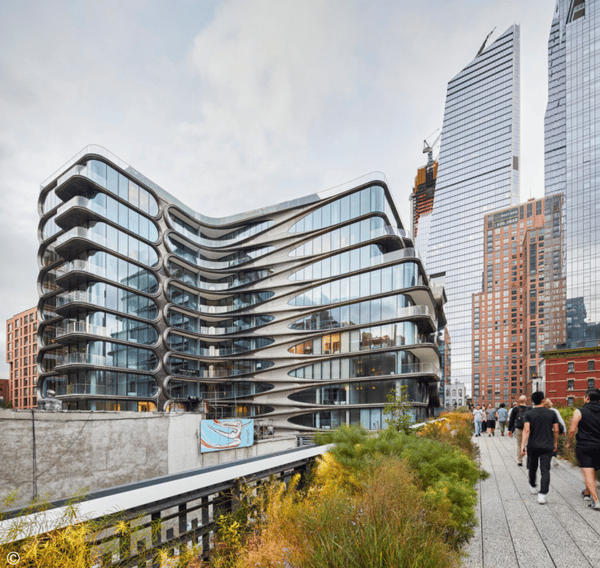
Image courtesy of Arch Daily
This Danish illustrator turned architect has redefined what architecture can be. His trademark phrase “yes is more” plays off past Starchitect Mies van der Rohe, who famously said “less is more.”
In reference to his minimalist philosophy, Bjarke's firm Bjarke Ingels Group, or B.I.G, has created ski hills on top of power plants, made apartment buildings into mountains, and designed skyscrapers with views of the Hudson River. With a whimsical approach to design, Bjarke is pushing the modern capabilities of what architecture can be and in the process creating new urban spaces for us to inhabit.
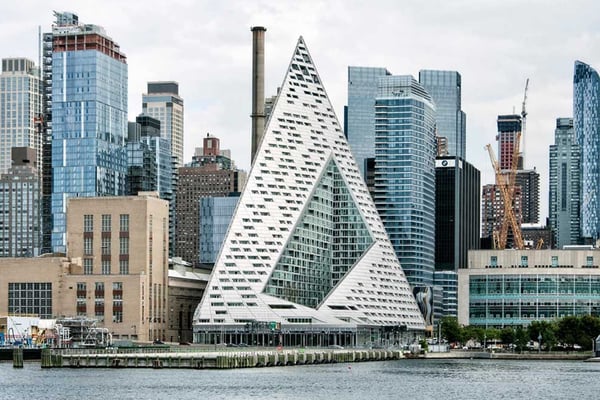
Image courtesy of The New Barcelona Post
It’s now 2000 years after Vitruvius’ books were published and architecture remains unchanged. Whether it is in the modern design of a skyscraper or the layout of an office space, Vitruvius’ criteria for defining something as architecture — Firmitas, Venustas, and Utilitas — still hold true. From starchitects to the local architect who designed your condo renovation, architecture in today’s digital world still is beholden to principles created centuries ago.
Want to continue learning about building architecture on the technical end? Learn all about building information modeling (BIM) software and how it allows architects to design, construct, and manage infrastructure.
Nicholas Van Antwerp works in Chicago as an architect and has worked on a wide variety of projects, including corporate offices, retail stores, residential remodels, new construction and senior living. He received his Master's in Architecture from the Illinois Institute of Technology and spent a year studying in Spain. As passionate as he is about the cityscape of Chicago, he enjoys leaving the city for the tranquility of the woods, ocean or river as frequently as possible.
Science shows that humans are leeching the world’s resources.
 by Nicholas Van Antwerp
by Nicholas Van Antwerp
Here’s a riddle: what does a box of Legos and the future of technology suites have in common? ...
 by Casey Paxton
by Casey Paxton
Data fabric is a new enterprise data solution, and the first real evolution of data since the...
 by Dan DeMers
by Dan DeMers
Science shows that humans are leeching the world’s resources.
 by Nicholas Van Antwerp
by Nicholas Van Antwerp
Here’s a riddle: what does a box of Legos and the future of technology suites have in common? ...
 by Casey Paxton
by Casey Paxton
